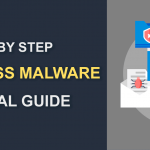Achieving The Web Applications Security
October 17, 2022 | By Admin

What Is Web Application Security?
Web application Security plays a critical role in half of all breaches that happen around the world. With all this going around for a while now, a meager 10% of companies secure all their critical applications and have the applications reviewed on security stance before and during production.
Of late, the need arises for companies to be clear on their web application security agenda. There is a dire need to replace fragmented, manual pen testing with ongoing, automated scanning. By doing so, they can defend their global application infrastructures. And this would also do away with the need for hiring extra consultants, the installation of more servers and scanning tools.
Web App Security Definition
Web application security refers to the methodology of securing websites and internet services against various security threats that make use of vulnerabilities in an application's code. The most common victims of web application attacks are content management systems like WordPress, database administration tools like phpMyAdmin, and SaaS applications.
Notable Reasons To Why Cyber-attackers Target Web Applications
Web Applications have become the simplistic route for comfortable attacks to be carried on by cyber-attackers as they prove to be least resistant. The below-mentioned reasons attribute for remaining as their prime target:
Web applications as the terminology suggest are continually exposed to the Internet. So, it is a bit easy to penetrate by external attackers using open tools that look for common vulnerabilities such as SQL Injection.
It is easy to attack usual targets like the network and host operating system layers which have their security tightened over time. In addition to this, the operating systems and networks are secured by mitigating controls like the IDS/IPS systems and next-gen firewalls.
When the time is insufficient and the need to deliver the product is creeping up then the testing phase may skip a few procedures. This might lead to vulnerabilities being exposed as the security concerns being overlooked.
The critical vulnerabilities may arise when the applications are compiled from hybrid code a mix of in-house development, outsourced code, and open source. This is due to the lack of proper visibility into the mechanisms and components.
The Web 2.0 technologies that incorporate complex client-side logic such as JavaScript (AJAX) and Adobe Flash present a larger attack surface.
Comodo cWatch Web Application Security
The Comodo cWatch - A Complete Website Security Software Solution Which Discovers and Continuously Monitors All Your Web Applications
Most of us tend to neglect to append website protection and security when we build our website. It is a really bad idea to miss out on the guidelines in today's evolving threat landscape. So, it is important for you to add security features and to protect your site from online dangers.
Web application security is a significant factor in the success of any web-based business. If the security of your web-based applications gets knocked-down, then it will negatively affect the company and its growth. So positively, add the key features to your website design strategy, and prevent the hacker from getting hold of important digital files and images on your website.
Comodo cWatch is a comprehensive website security tool for websites and applications. It features a powerful Web Application Firewall (WAF) provisioned over a Secure Content Delivery Network (CDN). It is backed by a 24/7 Cyber Security Operation Center (CSOC) with certified security experts. It leverages data from over 85 million endpoints to detect and mitigate threats before they occur.
Comodo cWatch also includes Website malware removal, detection and removal services to enable organizations to take a proactive approach to protecting their businesses and brand reputation from cyber-attacks.
Related Resource

 (14 votes, average: 4.43 out of 5, rated)
(14 votes, average: 4.43 out of 5, rated)









